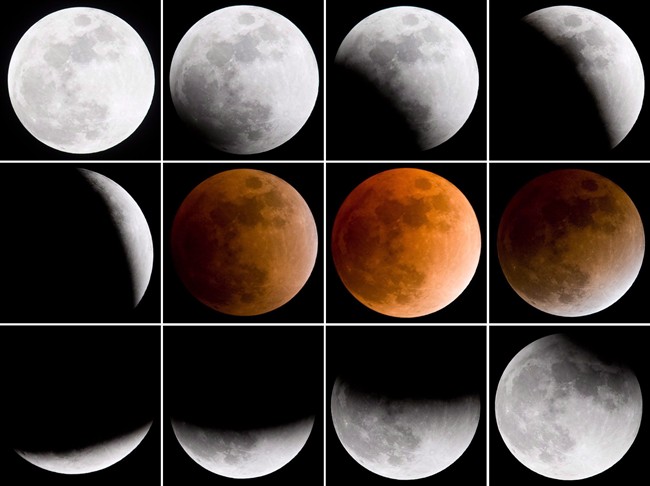On Sept. 27, Canada will be treated to a lunar eclipse, the last eclipse of the year.

Now, depending on where you are, you’ll either see the entire eclipse or just partial.
Lunar eclipses occur when Earth lies directly between the sun and the moon. As the sun shines behind it, Earth casts a shadow in space. When the moon passes through this shadow, called the umbra, we get a lunar eclipse.
Before the moon passes through the umbra, that it crosses the penumbra, which is kind of like a partial shadow. When this happens, it’s actually difficult to see any real change. However, when the moon enters the umbra, we see it darken. That’s what most people consider the start of a lunar eclipse.
During full eclipse, the moon usually turns a coppery-colour. The reason for this lies in our atmosphere.
As sunlight streams through our atmosphere, the green to violet part of the spectrum is filtered out. The reddish part of the spectrum remains. Its light is refracted towards Earth and then back out again sending that light onto the moon.
Though you may be reading about the Sept. 28 lunar eclipse, it’s the same eclipse: the only reason it sounds like it’s a day later is because it refers to Universal Time (UT).
The partial eclipse begins at 9:07 p.m. EDT (6:11 PDT). The total eclipse begins almost an hour later at 10:11 p.m EDT (7:11 p.m. PDT) and ends at 11:23 p.m. EDT (8:23 p.m. PDT). The partial eclipse ends at 12:27 a.m. EDT (9:27 p.m. EDT).
The entire eclipse will be visible from about Winnipeg all the way to the east coast. For those west of that the eclipse will be visible at moonrise.
And yes, the moon will be at perigee (the closest to Earth in its cycle), making it a “super moon” eclipse. The moon will appear 12.9 per cent larger than during the April 8 eclipse. This will be the final eclipse of the year.



Comments